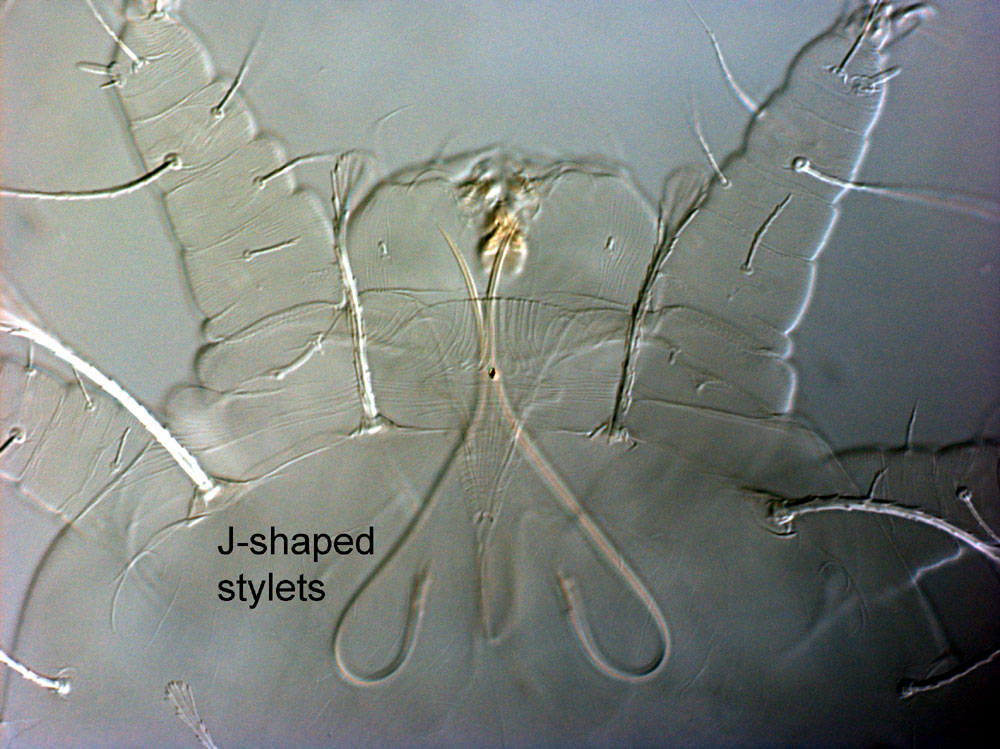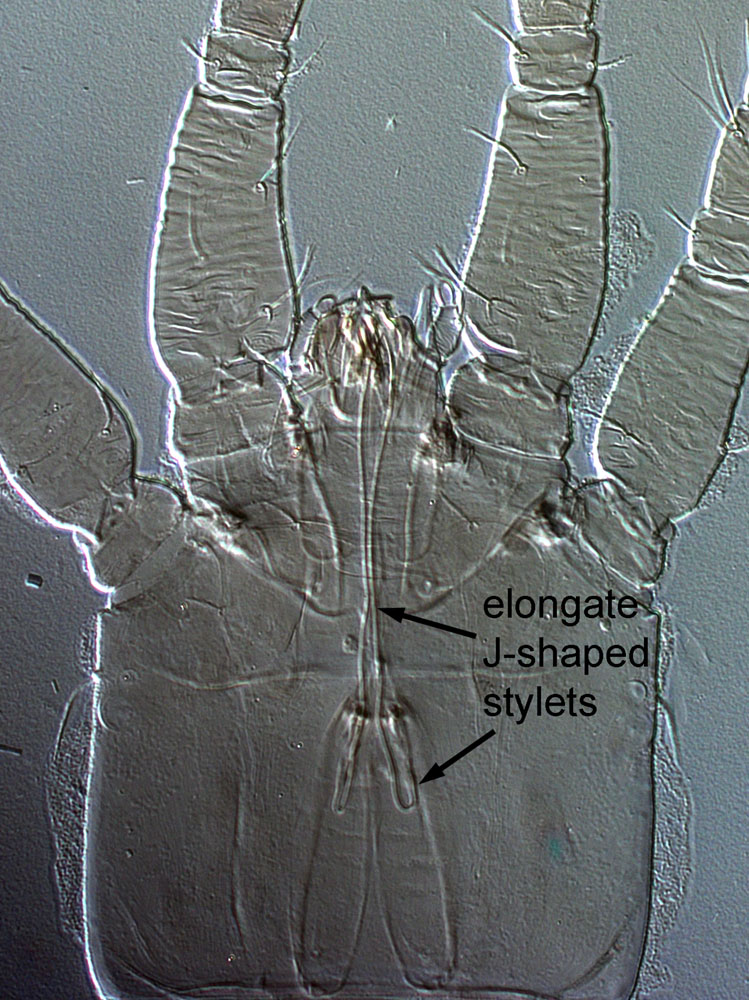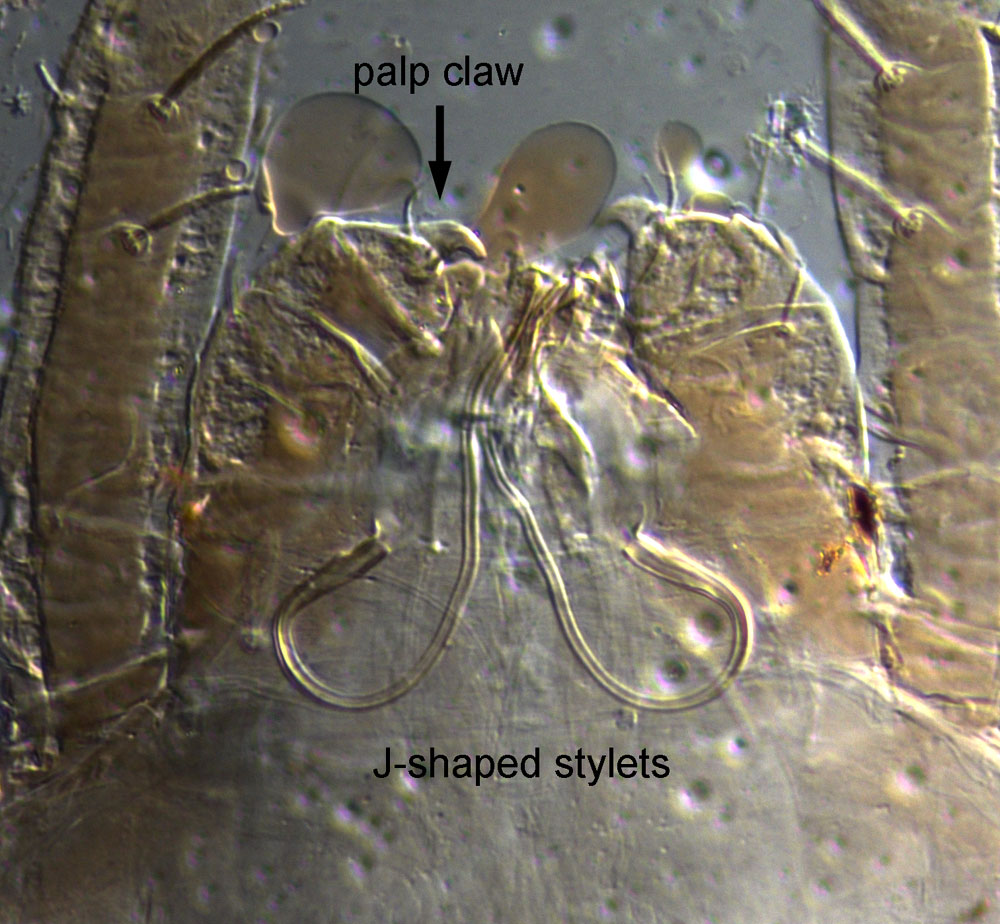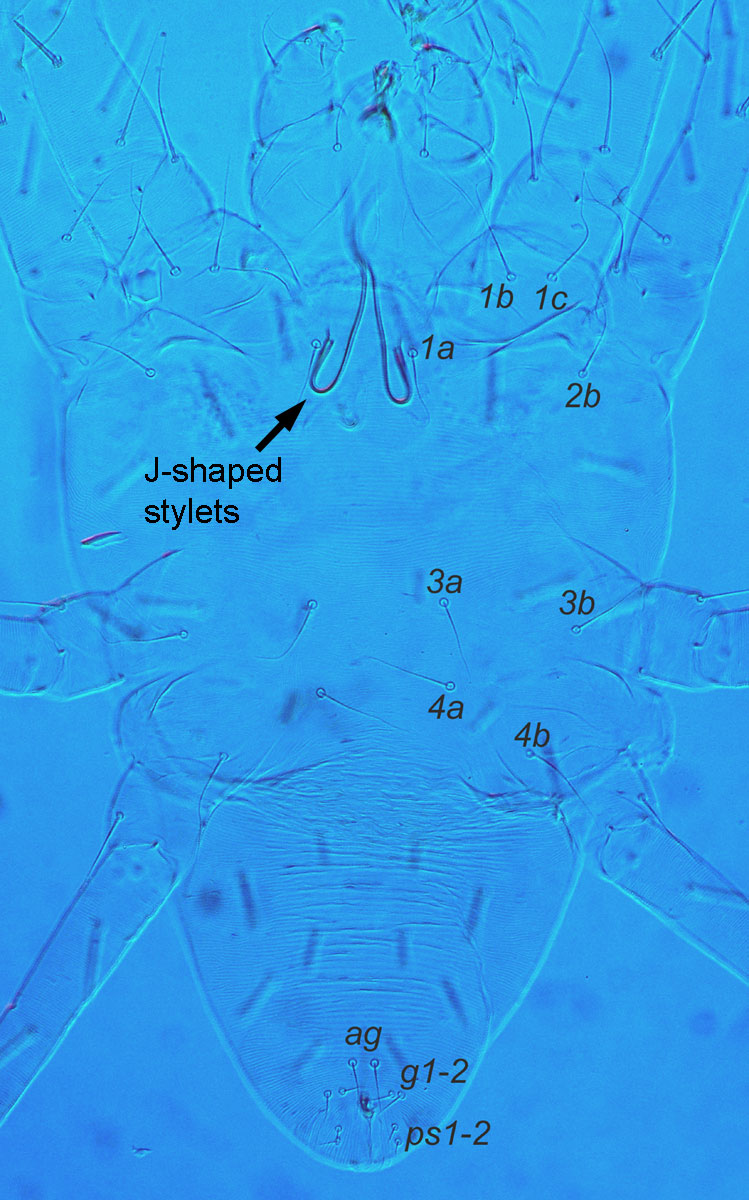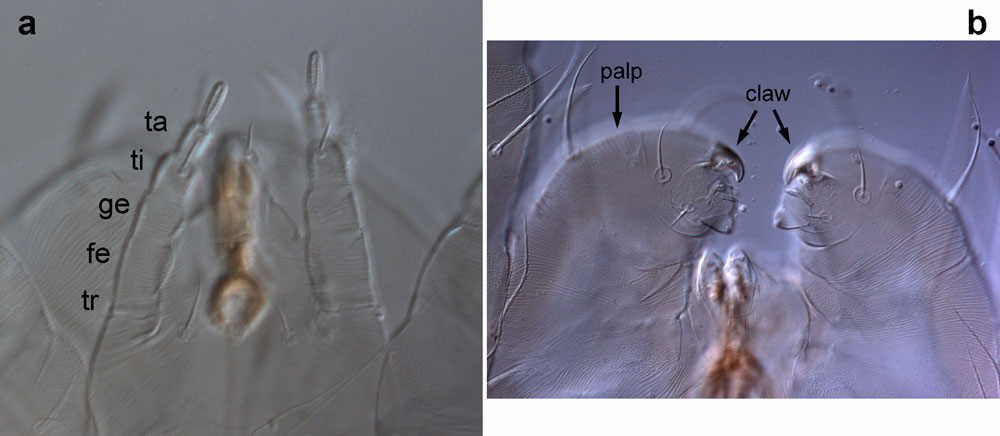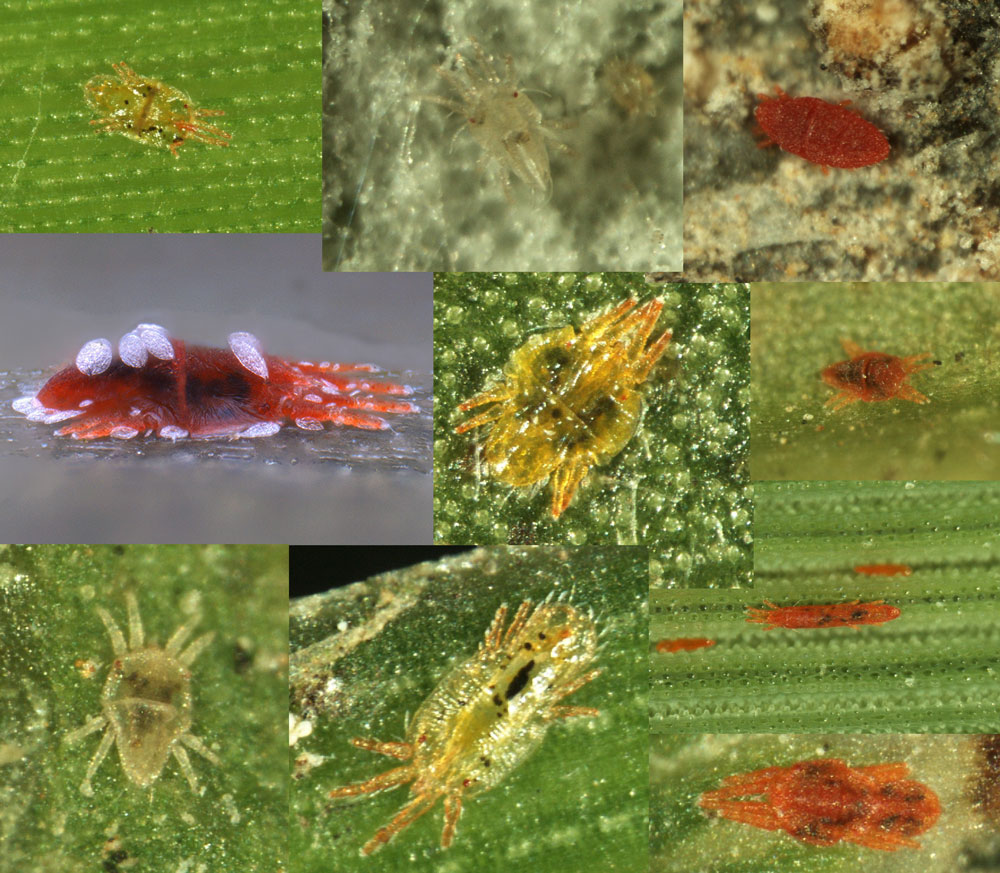About flat mites
Is it a flat mite?
Flat mites (family Tenuipalpidae) are related to the spider mites (family Tetranychidae), and both belong to the superfamily Tetranychoidea. Every member of the Tetranychoidea has a characteristic pair of long stylet-like mouthparts used for feeding. These mouthparts are located towards the anterior of the mite, and each member of the pair is J-shaped (only visible once slide-mounted) (Figs 1-4).-
Figure 1: J-shaped mouthparts are characteristic of the superfamily Tetranychoidea. -
Figure 2: J-shaped mouthparts are characteristic of the superfamily Tetranychoidea. -
Figure 3: J-shaped mouthparts and palp claw -
-
Figure 4: J-shaped mouthparts are characteristic of the superfamily Tetranychoidea
-
Other distinguishing characters for flat mites include - palps without a claw present on the second last segment (Fig. 5a) (present in all other tetranychoid families (Figs 3, 5b)), two pairs of eyes, body usually with a distinct dorsal division on the females (sejugal furrow = distinct fold in body between legs II – III; see Figs 7-9 on sex/stage determination page)), and the opisthosoma with 5 to 13 pairs of setae.
Flat mites come in a range of shapes and colours (Fig. 6)

